Prostatitis isa purely male disease. It is one of the most common lesions of the genitourinary system and occurs in approximately 80% of men, with 4 of them occurring before the age of 40.
Disease is not an isolated process: itexposes nearby organs to trauma and also poisons the whole body.
How does prostatitis develop?
The essence of the process is inflammation of the prostate or prostate gland.
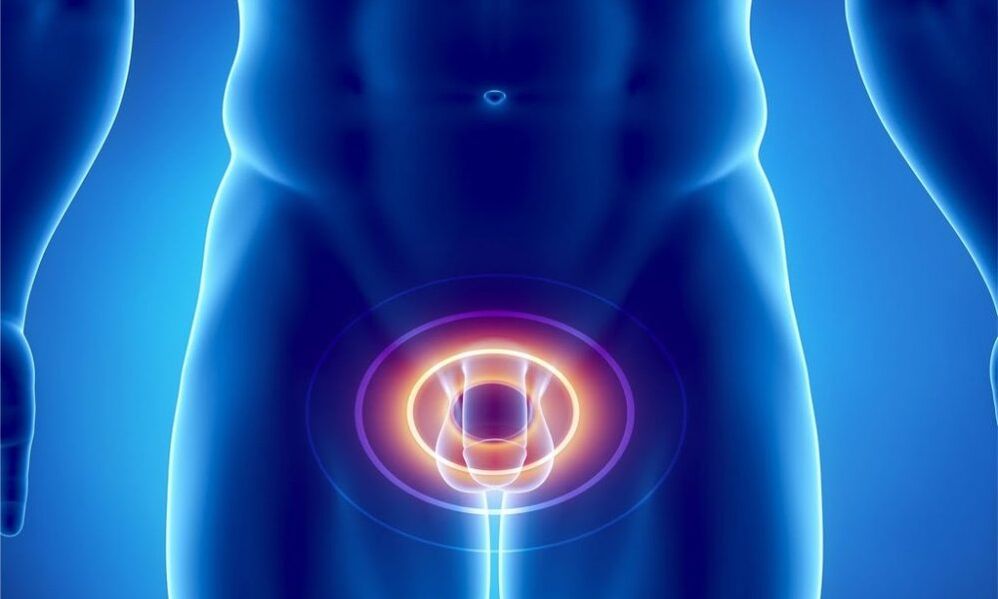
The prostate is located in the pelvis, next to the bottom of the bladder. This is an unpaired organ that looks like a chestnut. The urethra passes through it. Behind the gland is the rectum, and in front of it is the pubis.
The prostate gland is a very elastic organ, because its base consists of muscle fibers and glandular cells. It consists of 2 lobes, which are connected by an isthmus. It is the main source of problems related to urination. Thickening and increasing in size with age, the isthmus puts pressure on the urethra, disrupting the process of urine secretion.
prostateperforms such functions for the body:
| function | The essence |
|---|---|
| secretariat | Produces a secret that is part of the sperm. It dilutes it, sets the required pH level and increases sperm motility. |
| engine | The muscle fibers of the gland form the urinary sphincter, which helps to hold urine. |
| barriers | It contains a zinc-peptide complex, lysozyme, factors of cellular immunity, spermine, which prevent the development of contagious infection. |
Prostatitis develops when an inflammatory process begins in the gland. At the same time, it increases in size, squeezing the urinary tract. This causes difficulty in urination.
In addition, the enlarged prostate "interferes" with the bladder, squeezing it. Because of this, the evacuation of urine from it is interrupted, it gets stuck, causing inflammation now in the bladder. Long-term stagnation of urinary fluid in its "reservoir" leads to intoxication of the whole body with metabolic products in its composition.
Contributing Factors
The main reason for the development of prostatitis isinfection. This can be staphylococcus, enterococcus, Klebsiella, Pseudomonas aeruginosa and Escherichia coli, Proteus. Most often, prostatitis isconsequence of sexually transmitted diseases: syphilis or gonorrhea, chlamydia, trichomoniasis.
Less often, the cause of the disease isinfectious processes of other systems: flu, tuberculosis, tonsils and others. Bacteria and viruses enter the prostate through the lymphatic and blood flow, as well as through sexual contact. Very often, pathogenic flora enters the gland via the ascending route from the urethra or descending from the bladder with infected urine.
Other factorsthat provoke inflammation of the gland include:
- disorders of blood circulation in the pelvis. This can be caused by a sedentary lifestyle, excess weight and pelvic injuries. A special risk group is represented by drivers who are constantly in a sitting position and experience vibration and pressure in the perineal area. The reduction of blood circulation in the pelvis causes congestion and lack of oxygen in the prostate gland, which also provokes the development of infection.
- hypothermia,
- hormonal imbalance,
- urination problems
- Irregular sexual activity – very "violent" sex life, abstinence, cessation of sexual relations,
- chronic constipation,
- inflammation of the rectum,
- decreased immunity, as a result of which the body becomes susceptible to infectious agents.
There is an opinion that the risk of developing the disease increases with the regular use of alcohol and drugs.
Typing and symptoms of the disease
In the modern world, the division of prostatitis into types is carried out according to the classification of the US National Institute of Health in 1995. Itbased on clinical data, as well as the presence of leukocytes and pathogenic flora in seminal fluid, prostate secretion and urine:
- Acute bacterial prostatitis.
- Chronic bacterial prostatitis.
- CPPS – chronic pelvic pain syndrome or chronic non-bacterial prostatitis.
- Asymptomatic prostatitis.
Acute prostatitisis infectious in nature. There are several stages:
catarrhal Accompanied by frequent and painful urination. The pain radiates to the sacrum and perineum,follicular. The intensity of the pain increases. It also appears during defecation. Urination becomes difficult - urine comes out in a thin stream or drops. Hyperthermia up to 38°,parenchymatous. It is characterized by acute retention of urine and problems with bowel movements. Severe pains in the perineum, lower back and above the pubis. Body temperature rises to 38-40 °. Intoxication of the body develops, the symptoms of which are general weakness, nausea and increased heart rate.
During a digital examination by a urologist, an enlarged and dense prostate gland is palpated, hot and painful to the touch. A large number of leukocytes and bacteria are detected in the urine.
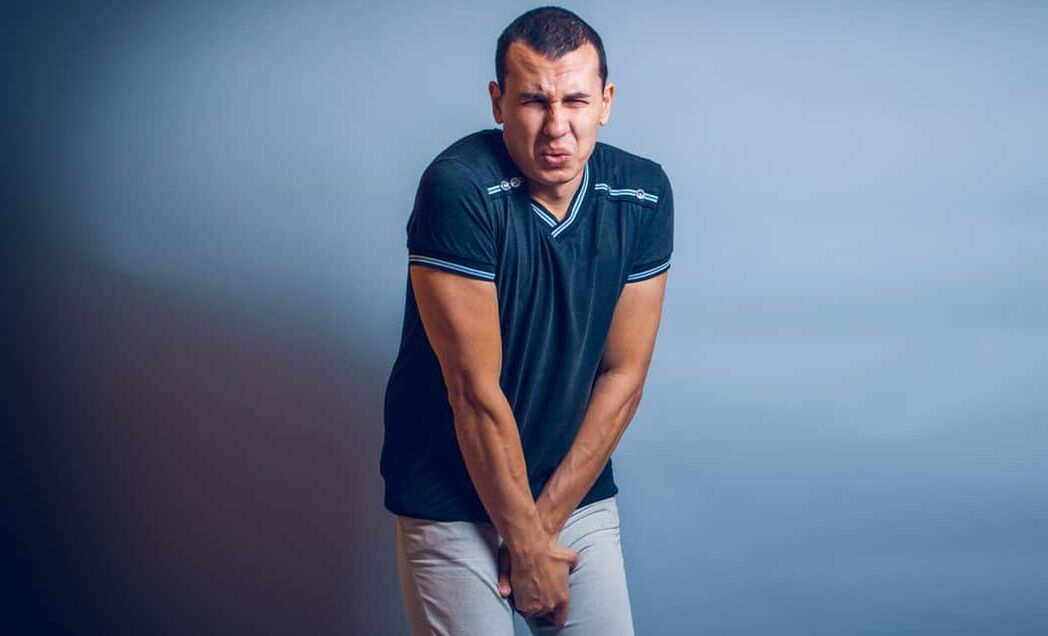
Chronic prostatitisit can develop as a consequence of an acute illness or as a separate illness. The diagnosis is established if the process lasts 3 months or more.
Chronic prostatitis is manifested in 3 main syndromes:
Painful. Interestingly, the prostate itself does not contain pain receptors. The pain appears when the inflammatory process captures the nerve fibers of the small pelvis, in which there are quite a few of them. It is of a different nature. It can be trivial or sharp and strong, disturbing even at night, subsides and starts again. It is located in the sacrum, scrotum, lower back and perineum.dysuric The urge to urinate becomes more frequent. It becomes sluggish and has a feeling of a heavy bladder, not completely emptied. Then the process can improve due to a compensatory increase in the bladder muscles, but soon it starts again. Discharge appears from the urethra during bowel movements.sexual disorders - increase in erection at night or its decrease, blurring of orgasm, pain during ejaculation and its acceleration. Aggravation of sexual disorders, which eventually lead to impotence. There is a concept of psychogenic dyspotency, when a man convinces himself that in his condition, violations in the intimate sphere are inevitable. And they are actually developing. With the development of sexual dysfunction, a man's mood also changes: he becomes nervous and depressed.
Often the chronic form of prostatitis becomes a manifestation of hidden sexually transmitted infections.
Diagnosis of CPPSit is decided if the clinical manifestations of prostatitis are present, but the pathogens of the disease are not detected in biological fluids (urine, ejaculate and prostate secretions). Leukocytes are determined at the same time.
The main criterion for diagnosis is pain that does not go away within 3 months.
Chronic pelvic pain syndrome is divided into 2 categories: inflammatory and non-inflammatory.
Inflammatory CPPSit is determined when there is a large number of leukocytes in biological fluids. Bacteria are not detected.
Non-inflammatory CPPScharacterized by the absence of leukocytes and pathogenic flora in biological fluids.
In both cases, prostatitis symptoms persist.
Asymptomatic formThe disease is characterized by the absence of signs of prostate inflammation. It is discovered incidentally during the histology of the prostate tissue if the patient has been prescribed a prostate biopsy. A similar procedure is described, for example, when PSA levels increase.
The disease, regardless of its type (except for the asymptomatic form), is manifestedFirst of all, urinary disorders:
- pain during urination,
- weak or shaky flow of urine,
- bladder feeling not completely empty.
If such symptoms appear, do not delay the visit to the urologist. This will help stop the process in its first stage.
How to recognize the disease
The main criterion for establishing the diagnosis is the clinical appearance and the patient's complaints.
But to confirm it finally,it is necessary to undergo a series of analyzes and examinations:
Examination by a urologist. The doctor should perform a rectal examination of the prostate. It is passed with a finger through the rectum. It is advisable to have a bowel movement before the examination. Using manipulation, the shape and size of the gland, as well as its consistency, are determined. The procedure helps to determine the presence of tumors and inflammation in the prostate. Digital examination allows you to collect secretions of the prostate.Urine analysis. Two parts are examined: urine collected at the beginning of urination and urine collected at the end of the process. 1 portion shows the state of the urethra, 2 - the kidneys and bladder. The presence of leukocytes in the urine above normal (15 per field of view) indicates inflammation.After the collection of urine, the prostate is massaged, as a result of which its secretion is obtained. If there is very little and it is not released from the urethra, but remains on its walls, the urine is collected after the massage. It is as informative as the prostate discharge itself. Leukocytes are also determined here (there should be no more than 10 of them), and, in addition, lecithin grains and amyloid bodies. If the first analysis of the secretion of the gland did not show any abnormalities, this does not mean the absence of a process. Prostatic fluid can be very viscous and block the lumen of the ducts of the affected glands. Then the secretory secret will be produced by the healthy cells of the glands. Therefore, it is necessary to go through such an analysis several times. Cultures of urine and prostate secretions are also performed to identify the causative agent of the disease and to determine sensitivity to antibiotics.General blood analysis. Analysis for the presence of sexually transmitted diseases. Ultrasound of kidneys, bladder, TRUS, which allows you to fully assess the state of the prostate,Uroflowmetry. It is used to estimate the rate and time of urine excretion. It is performed with a special device consisting of sensors and a container. All the patient has to do is urinate into it in the usual way.Blood PSA – prostate specific antigen. It is indicative of the presence of tumor formations in the prostate gland - adenoma or cancer,Prostate biopsy. It is performed if the presence of cancer is suspected.
It is necessary to do a spermogram, which will help to confirm or reject infertility.
Therapy of acute and chronic prostatitis
Uncomplicated acute prostatitis is usually treated on an outpatient basis. Hospitalization is indicated for severe intoxication or development of complications.
Treatment of acute prostatitisstart antibiotics. If the condition is very worried, they are administered without waiting for the results of the analysis. They use groups of antibacterial drugs that are able to penetrate deep into the tissues of the prostate gland. They act on those types of bacteria that most often cause inflammation in it. These antibiotics include fluoroquinolones.
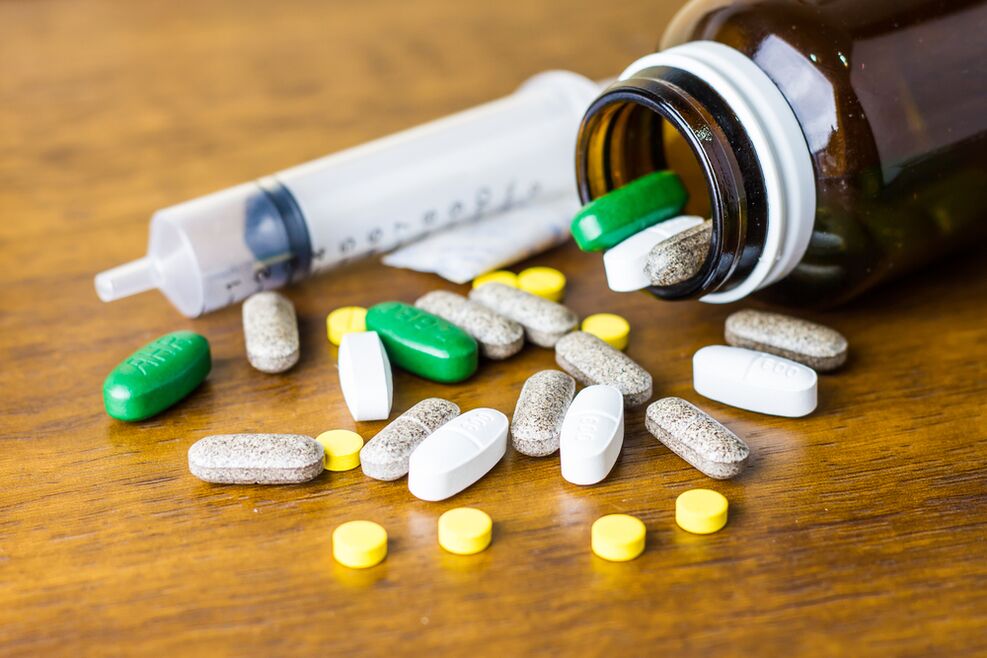
After taking the testsantibiotic therapy can be adjusted differently. It all depends on the causative agent of the disease and its sensitivity to the drug. Therapy is also changed if no effect is observed after 2 days.
In case of acute inflammation of the prostate gland, the administration of painkillers and non-steroidal anti-inflammatory drugs is indicated. In addition to oral medications, suppositories are also used, which also have an analgesic and anti-inflammatory effect: based on prostate extract, suppositories with propolis.
In case of severe intoxicationperform detoxification therapy. To do this, use a glucose solution.
Prescribed drugs that improve blood circulation in the prostate. They ensure the drainage of lymph from the gland, relieve swelling and promote the elimination of toxins.
In case of acute prostatitis, it is prohibited to massage the gland, as this can provoke the development of sepsis.
Treatment of chronic prostatitis depends on the stage of the disease.
In the acute form, antibiotics are used. In the remission phase, the therapy is aimed at maintaining the normal functioning of the gland:
- Drugs that normalize the microcirculation of organs.
- Anti-inflammatory medications.
- It is important to preserve the body's immune function, which decreases under the influence of antibiotic courses. For this, patients are prescribed immunostimulants.
- For sexual dysfunction, it is possible to prescribe antidepressants and sedatives.
- Prostate massage.
- Physiotherapy:
- laser,
- ultrasound,
- rectal electrophoresis,
- transrectal microwave hyperthermia.
- Physiotherapy.
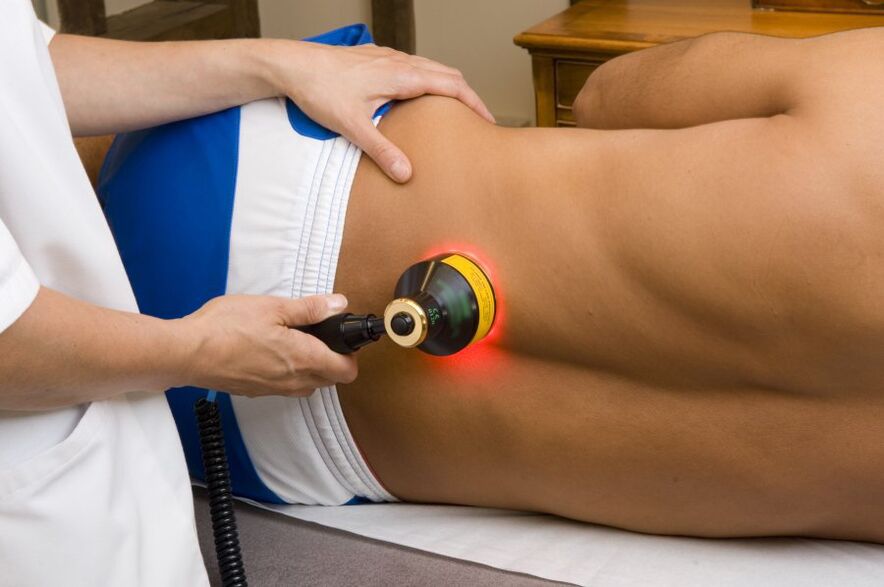
Physiotherapy for prostatitis helps increase pelvic floor muscle tone and reduce pain.
Prostate massage: purpose and technique
Finger massage of the prostate has several purposes.
It is used as a diagnosis, to obtain glandular secretions, and also as a method of treating chronic prostatitis.
MOSTA common method for this procedure is transrectal. In this case, the patient is placed on the right side with bent knees. The doctor inserts the index finger into the anus, moving it along the rectum. Then a massage is performed: gentle strokes of each lobe of the gland around it and along the channels. At the end of the procedure, the groove between the lobes is mixed to release the secretory fluid.
It is necessary to focus on the patient's sensations: there should be no pain during the manipulation. The procedure lasts 1 minute, the full course is 15 sessions.
An indication of a quality massage is the release of several points of glandular secretion.
Such manipulation, first of all,increases blood flow to the prostate. This accelerates tissue repair and improves the passage of medications, eliminates congestion and relieves inflammation.
Massage helps to strengthen the muscles of the gland and perineum. The procedure allows you to remove stagnant seminal fluid from the organ, due to which the prostate is cleansed of bacteria and toxins. Compression of the urethra is eliminated and urination improves. Massage increases potency by increasing the circulation of seminal fluid.
In addition to the transrectal method, there is an instillation method and bougie massage.
Instillation methodbegins with the introduction of a medicinal solution through the urethra. The prostate is then grasped and massaged using the finger method. In this case, the healing solution penetrates the gland, increasing the effect of the procedure. At the end, the urethra is bare, it is recommended to wait a little while urinating. The medicine is reintroduced into the urethra.
Bougie massageis carried out through the urethra using bougies - special instruments for expanding and examining the tubular organs. The patient is in the right lateral position. The bougie is inserted into the urethra and held with one hand. With the other hand, hit and press the penis from top to bottom. The duration of the procedure is 1 minute, after which the drugs are administered intraurethrally. This massage is supported by antibiotic therapy.
Prostate finger massage- medical manipulation, which is performed by a specialist according to clear indications.
An opportunity for self-massage is possible: to do this, rhythmically tense and relax the muscles around the anus. This procedure will be invisible to others and will help strengthen the gland.
Like any manipulation,Prostate massage has its own contraindications:
- acute inflammation of the prostate,
- cancer or adenoma of the gland,
- hemorrhoids,
- stones, cystic formations in the prostate organ.
A professionally performed procedure will help restore the structure of the prostate and its function, and stimulation of sensitive points will eliminate sexual dysfunction.
Prostatitis and traditional medicine
Along with medicines, traditional methods will also help to cope with inflammation of the prostate.The combination of these 2 types of treatment, you will speed up the healing process and get rid of unpleasant sensations.
There are many home remedies that help in the fight against prostatitis. Here are some of them:
- Grind 500 grams of raw peeled pumpkin seeds through a meat grinder and mix with 200 grams of honey. Make small balls from the resulting mass. Consume before meals 2 times a day, slowly, chewing and digesting well. Pumpkin seeds contain a large amount of zinc, which is essential for men's health.
- blueberries have an anti-inflammatory effect. By eating 200 grams of this berry per day, you will support your men's health,
- Parsley, first of all, became famous as a culinary spice. But in addition, it also contains many useful substances, including those needed by the male body. Take parsley juice 1 tablespoon. l. 3 times a day 30 minutes before meals. This will help relieve inflammation and improve sex life,
- take the green skin of the chestnuts together with the thorns, cut them and pour boiling water over them. Use as a tea
- Grind 300 grams of onion into a paste-like mass, add 100 grams of honey, 600 ml of dry wine. Keep for 1 week in a dark and cool place, stir occasionally. strain. Use 2 tbsp. l. 3 times a day before meals. Effective in the treatment of chronic prostatitis.
Some will help speed recoveryphysical exercises. They stimulate blood circulation in the pelvic area and, accordingly, in the prostate.
- Deep shots below knee level. The optimal number of times is 100. Perform 3 times a week. If you can't do such a number right away, make collections in several approaches with breaks.
- Scissors. Sit on the floor with your hands on the floor behind you. Extend your legs in front of you, lift them off the floor. Cross them over each other. The movements resemble the work of scissors.
- Lying on your back, bend your knees and bring them to your chest. Wrap your arms around them. Hold the pose for up to 20 minutes.
- Regular walking is also a great way to relieve congestion.
You cansupplement this complex with other exercises, which activate and warm the muscles.
Adolescent prostatitis
It's hard to believe, but prostatitis, which was considered the province of middle and old age, is now significantly younger and is found even in teenagers. It negatively affects the condition of the whole body, as well as the reproductive capacity of young people.
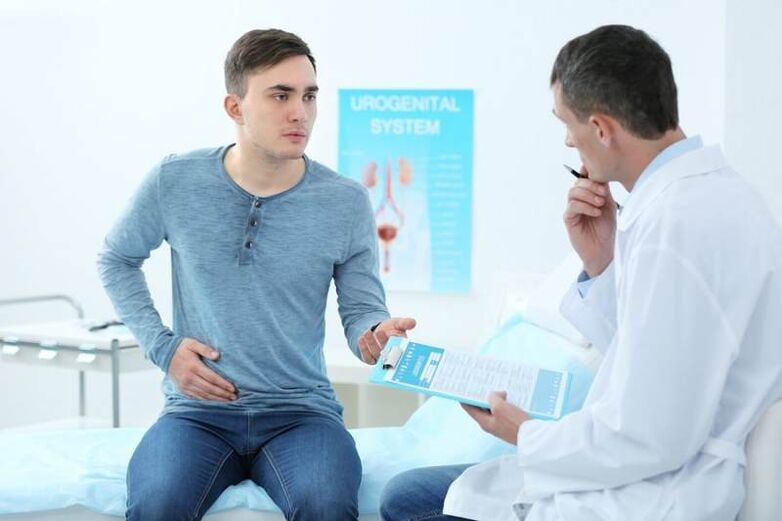
That's whyit is important to understand the reasonsleading to adolescent prostatitis:
early sexual activity and sexual illiteracy. Unprotected sexual intercourse contributes to the flourishing of sexually transmitted infections, which can cause bacterial inflammation of the prostate,hypothermia – a contributing factor in the development of prostatitis. The temperature imbalance reduces immunity and exposes the body to infectious attacks,fashion trends - wearing very tight clothes and underwear disrupts blood circulation in the pelvis and leads to stagnation in this area;sedentary lifestyle - work on the computer of modern youth replaces sports, walks and other active pastimes,excessive sexual activity it literally depletes the gland. Its functions are reduced and the small amount of secretion released and the deterioration of quality make it more susceptible to infections.
Prostatitis appears in young people in different ways. Some are concerned about the obvious symptoms: hyperthermia, severe pain in the groin with radiation to neighboring organs and during urination. For others, the symptoms appear in a mild form. General weakness, decreased activity, low temperature and urethral discharge appear.
manyIt is important not to ignore the signs of the disease, but to start treatment in time. The neglected pathological process will leave a mark on the condition of the organ and the life of young people.
Preventive actions
It is better to prevent any disease than to treat it. Prostatitis prevention measures are quite simple and not difficult to follow.
- First of all,review your daily routine. If you have a sedentary job, be sure to include five minutes of exercise in your routine. Stretch your body, move more. This is necessary to make the blood "flow" faster through the vessels. At the same time, avoid excessive physical activity, which tires the body.
- Stop smoking. Tobacco smoke spasms blood vessels and impairs blood circulation, reducing the supply of oxygen to the prostate gland. Limit your intake of alcoholic beverages.
- Avoid hypothermia and nervous tension.
- It is worth eating marinated dishes, as well as spices and pickles and hot sauces in doses.
- The regularity of sexual activity and the appropriateness of sexual relations must be respected.
Untreated prostatitis threatens a number of complications: the transition to a chronic form, the development of infertility, the spread of the process to the kidneys and bladder. More serious consequences include prostate adenoma and cancer. It is possible that purulent foci - abscesses - appear in the gland and become septic.
As you can see, the disease is quite insidious. And, despite the delicacy of the issue, you should not delay its treatment. Block the process in the early stages of its development: only in this case you will preserve your health and virility.























